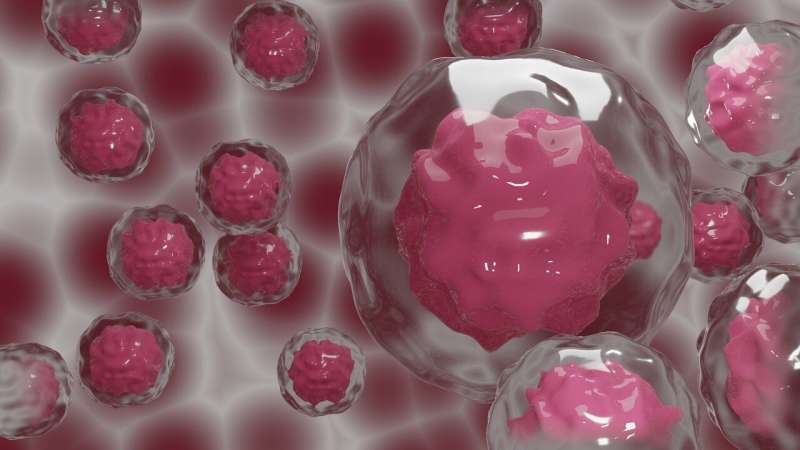Home » Health News »
Fibroblasts could serve as new key to enhancing personalized treatment for lung cancer patients

Three subtypes of cancer-associated fibroblasts (CAF) could guide the design of personalized treatment for lung cancer patients, according to a new study in Cancer Cell led by researchers at Massachusetts General Hospital (MGH).
Solid tumors like non-small-cell lung cancer (NSCLC) contain at least three major cellular components: cancer cells, immune cells and CAFs (which produce a tumor’s cellular matrix and secrete signaling molecules). Current personalized cancer treatment approaches predominantly focus on targeting the cancer cells (e.g., oncogene-specific inhibitors) and the immune context (e.g., immune checkpoint blockade) of a tumor. And it had been unclear whether CAFs could be leveraged for designing more personalized treatment.
Unlike cancer cells that are readily distinguishable based on genomic aberrations, the characterization of CAFs’ heterogeneity has been historically challenging. As a result, previous attempts to universally target and broadly deplete CAFs rarely improved patient outcomes in the clinic. “We need a new approach to characterize CAFs. Importantly, we need to gain a comprehensive understanding of different CAFs’ biological functions and their clinical significance,” says lead author Haichuan Hu, MD, Ph.D., research staff in the Mass General Cancer Center and an instructor in Medicine at Harvard Medical School.
As they reported in the paper, chosen as the cover story of Cancer Cell‘s November issue, the researchers derived CAFs from lung cancer biopsied tissue and compiled a large collection with a broad molecular spectrum. Using this living biobank of CAFs, the researchers could test the CAFs in the lab and compare their therapeutic impacts with the corresponding patients’ treatment responses. By investigating CAFs’ heterogeneity using the same therapeutics given to patients, they identified three subtypes with distinct biological functions and therapeutic implications:
- those robustly protective of cancers because they highly express the growth factors HGF and FGF7
- those moderately protective of cancers and highly expressing FGF7
- and those providing minimal protection and producing inflammatory factors, thus recruiting immune cells.
Thus, patients carrying the first two subtypes of CAFs may benefit from supplementing their treatment (e.g., EGFR TKI and ALK TKI) with additional drugs targeting MET (HGF receptor) and FGFR (FGF7 receptor), and patients carrying the third subtype of CAFs may benefit further from immuno-oncology strategies.
The MGH researchers further demonstrated that these functional subtypes of lung CAFs associate with patients’ clinical outcomes to targeted therapies, and CAFs’ functional distinctions are governed by their intrinsic transforming growth factor beta (TGF-β) signaling pathway activities that regulate the HGF and FGF7 expression levels.
Source: Read Full Article


